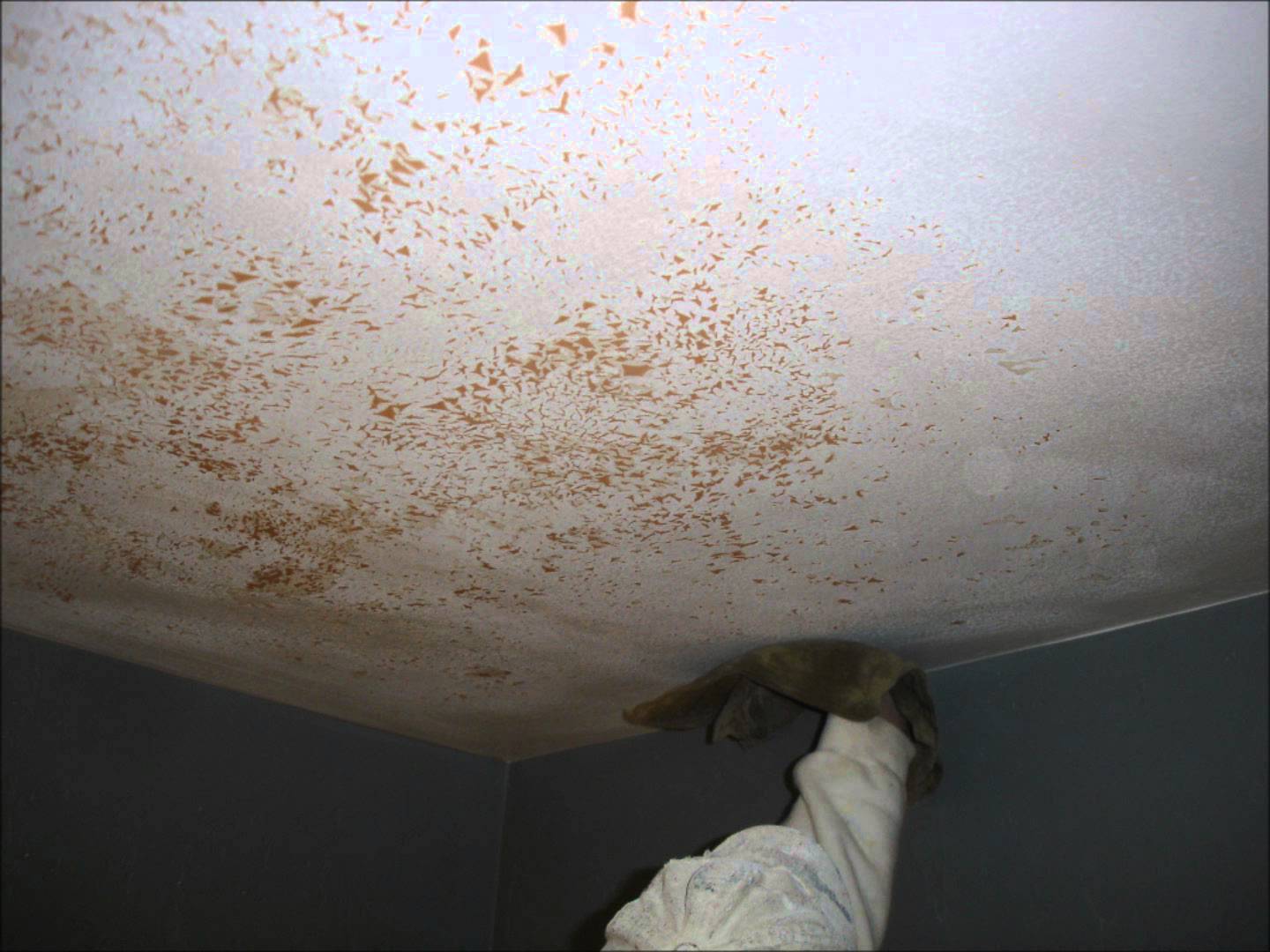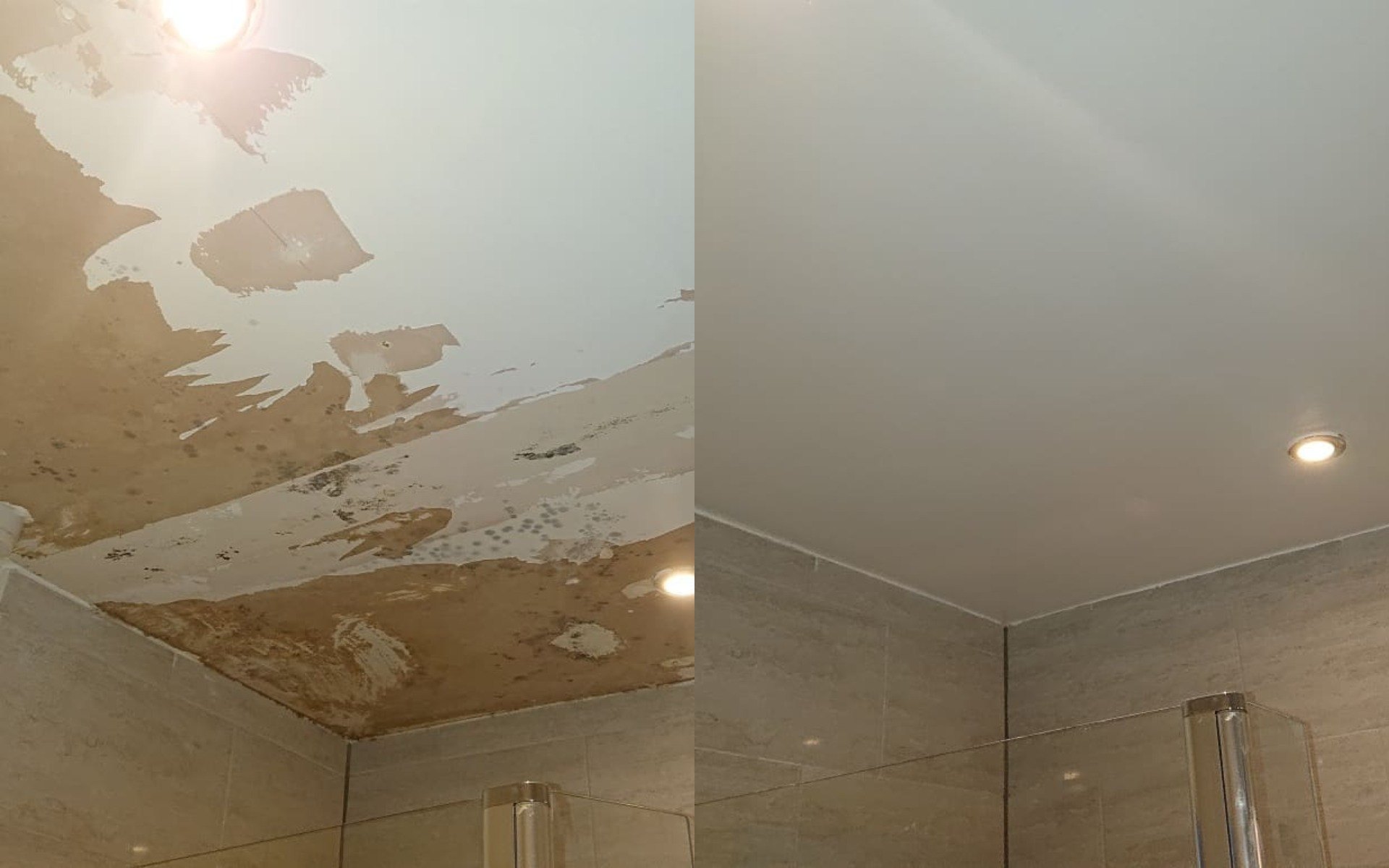Understanding the Cause of Peeling Paint

Okay, so you’ve got this peeling paint on your bathroom ceiling, and you’re like, “What’s the deal, dude?”. Don’t worry, it’s a common problem, especially in humid places like Bali. But before you grab your paintbrush, let’s figure out why that paint is shedding its skin.
Moisture and Humidity, How to repair bathroom ceiling peeling paint
Moisture is the main culprit behind peeling paint in bathrooms. Think of it like this: Your bathroom is a steamy jungle, especially after a hot shower. All that steam condenses on the ceiling, creating a damp environment. Over time, this moisture seeps into the paint, weakening its bond to the wall. This is like a slow, steady erosion, chipping away at the paint’s integrity.
“Moisture is the enemy of paint, especially in a bathroom.”
Poor Ventilation
Poor ventilation is like a bad surfer, letting the waves of humidity crash onto your bathroom ceiling. Without proper ventilation, the moisture from showers and baths lingers, creating a breeding ground for mold and mildew. This can cause the paint to bubble, peel, and even become discolored.
“A well-ventilated bathroom is a happy bathroom.”
Improper Paint Application
Sometimes, peeling paint is a result of a bad paint job, like a surfer who’s never learned how to catch a wave. If the paint wasn’t properly prepared or applied, it won’t adhere to the surface properly. This could mean that the paint was applied over a dirty or greasy surface, or that the wrong type of paint was used.
“Don’t be a rookie when it comes to paint.”
Preparing for the Repair: How To Repair Bathroom Ceiling Peeling Paint

Okay, so you’ve figured out why your bathroom ceiling is peeling, now it’s time to get your hands dirty (or rather, your tools!). Before you start painting, you need to prep the ceiling properly. Think of it like getting ready for a big night out – you wouldn’t just slap on some lipstick and call it a day, right?
Cleaning the Ceiling
Cleaning the ceiling is the first step in preparing it for paint repair. This removes any dirt, dust, and grime that could interfere with the paint’s adhesion. It also helps to identify any damaged areas that need to be repaired.
- Grab your trusty cleaning supplies: a bucket, warm water, mild detergent, a sponge, and a soft cloth. You might also want to wear gloves to protect your hands.
- Mix a solution of warm water and mild detergent in the bucket. Avoid using harsh cleaners, as they can damage the ceiling.
- Dip the sponge in the solution and gently scrub the ceiling, paying special attention to any areas where there is peeling paint. Be careful not to apply too much pressure, as this could damage the ceiling.
- Rinse the ceiling with clean water and dry it thoroughly with a soft cloth. Make sure the ceiling is completely dry before proceeding to the next step.
Scraping the Ceiling
Now it’s time to get rid of that pesky peeling paint! Scraping removes loose paint and reveals the underlying surface, ensuring that the new paint will adhere properly.
- Grab your trusty scraper and a dust mask. Wearing a dust mask is important to protect your lungs from the dust and paint chips that will be flying around.
- Start by scraping the loose paint from the ceiling. Use gentle strokes to avoid damaging the ceiling surface. If the paint is stubborn, you can use a paint thinner to soften it.
- Once all the loose paint has been removed, inspect the ceiling for any remaining imperfections, such as cracks or holes. These will need to be repaired before you can paint.
Sanding the Ceiling
Sanding smooths out any rough edges and creates a uniform surface for the new paint to adhere to. It’s like giving your ceiling a mini-massage, but with sandpaper instead of hands!
- Grab your sandpaper (you’ll want a medium grit for this step) and a sanding block (optional, but helpful for a more even finish). You might also want to wear a dust mask to protect yourself from the dust.
- Sand the entire ceiling, focusing on any areas where there are rough edges or imperfections. Be careful not to sand too hard, as this could damage the ceiling.
- Once you’re finished sanding, use a damp cloth to wipe away any dust and debris. Make sure the ceiling is completely dry before proceeding to the next step.
Repairing the Peeling Paint
Okay, so your bathroom ceiling is looking a bit like a Balinese sunset – all fiery and peeling. Don’t worry, we’ve got this! Now that you’ve prepped the area, it’s time to get into the real repair work.
Patching and Filling
Let’s talk about patching and filling. These methods are like giving your ceiling a little TLC to smooth out the rough spots. Think of it as applying a bit of Balinese magic to make everything nice and even again.
- Patching: This is your go-to for small areas of peeling paint. Use a patching compound, a bit like a magic putty, to fill in the gaps. You’ll need a putty knife, like a tiny Balinese trowel, to spread it smoothly. Let it dry, then sand it down for a seamless finish.
- Filling: This is for larger areas. Use a spackling compound, like a thicker version of the patching compound, to fill in the gaps. Again, use a putty knife to spread it evenly. Let it dry, then sand it down for a smooth surface.
Applying Primer
After you’ve patched or filled, it’s time for the primer. This is like giving your ceiling a fresh start. It helps the paint adhere better, preventing further peeling.
- Choose the right primer: Look for a primer specifically designed for bathroom ceilings, as it will be resistant to moisture and mildew. Think of it as a special Balinese charm to keep your ceiling looking fresh.
- Apply the primer: Use a paintbrush or roller to apply the primer evenly to the entire area. Let it dry completely before moving on to the next step.
